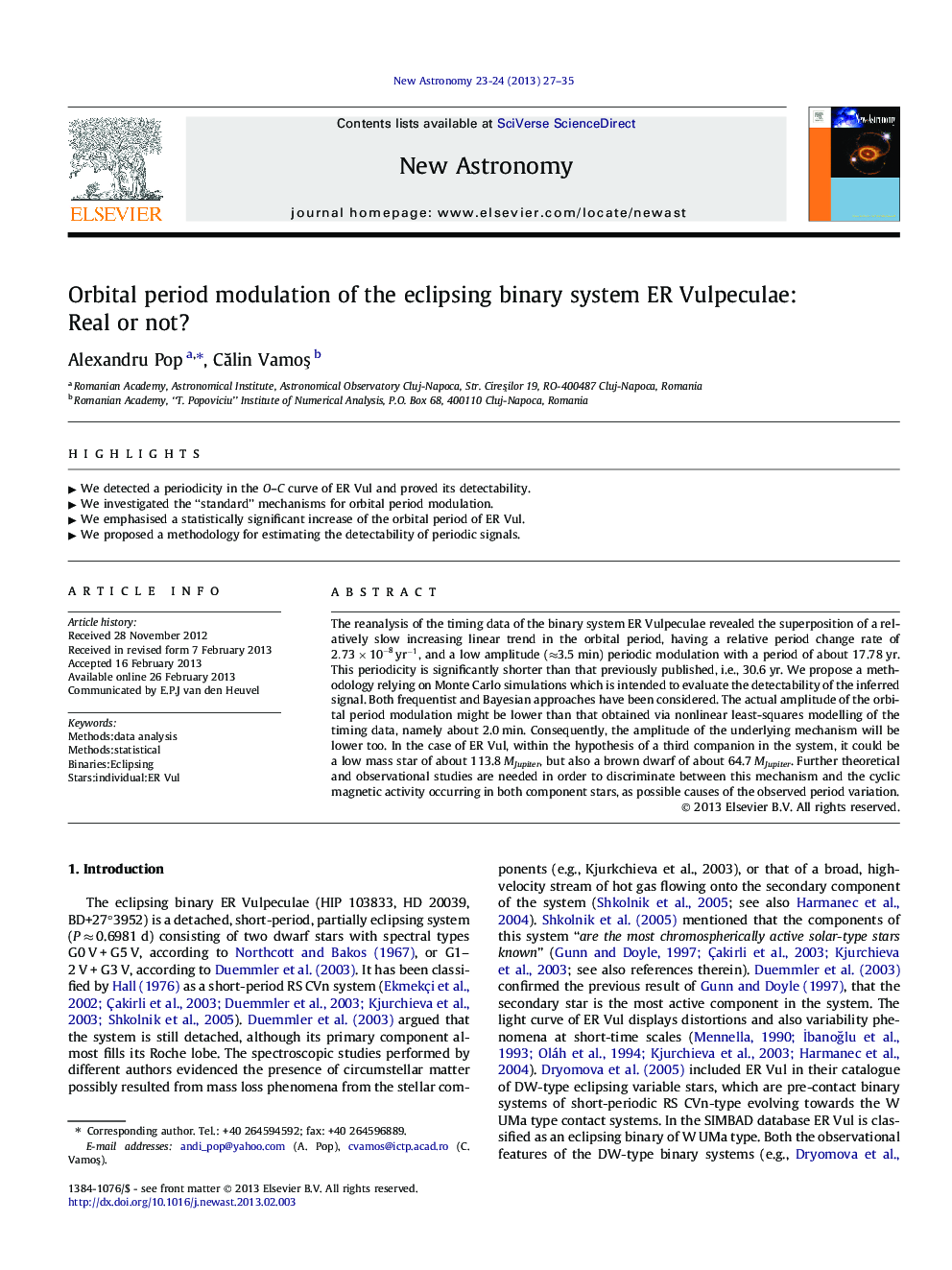| Article ID | Journal | Published Year | Pages | File Type |
|---|---|---|---|---|
| 1779074 | New Astronomy | 2013 | 9 Pages |
The reanalysis of the timing data of the binary system ER Vulpeculae revealed the superposition of a relatively slow increasing linear trend in the orbital period, having a relative period change rate of 2.73×10-8yr-1, and a low amplitude (≈3.5 min) periodic modulation with a period of about 17.78 yr. This periodicity is significantly shorter than that previously published, i.e., 30.6 yr. We propose a methodology relying on Monte Carlo simulations which is intended to evaluate the detectability of the inferred signal. Both frequentist and Bayesian approaches have been considered. The actual amplitude of the orbital period modulation might be lower than that obtained via nonlinear least-squares modelling of the timing data, namely about 2.0 min. Consequently, the amplitude of the underlying mechanism will be lower too. In the case of ER Vul, within the hypothesis of a third companion in the system, it could be a low mass star of about 113.8 MJupiter, but also a brown dwarf of about 64.7 MJupiter. Further theoretical and observational studies are needed in order to discriminate between this mechanism and the cyclic magnetic activity occurring in both component stars, as possible causes of the observed period variation.
► We detected a periodicity in the O–C curve of ER Vul and proved its detectability. ► We investigated the “standard” mechanisms for orbital period modulation. ► We emphasised a statistically significant increase of the orbital period of ER Vul. ► We proposed a methodology for estimating the detectability of periodic signals.
